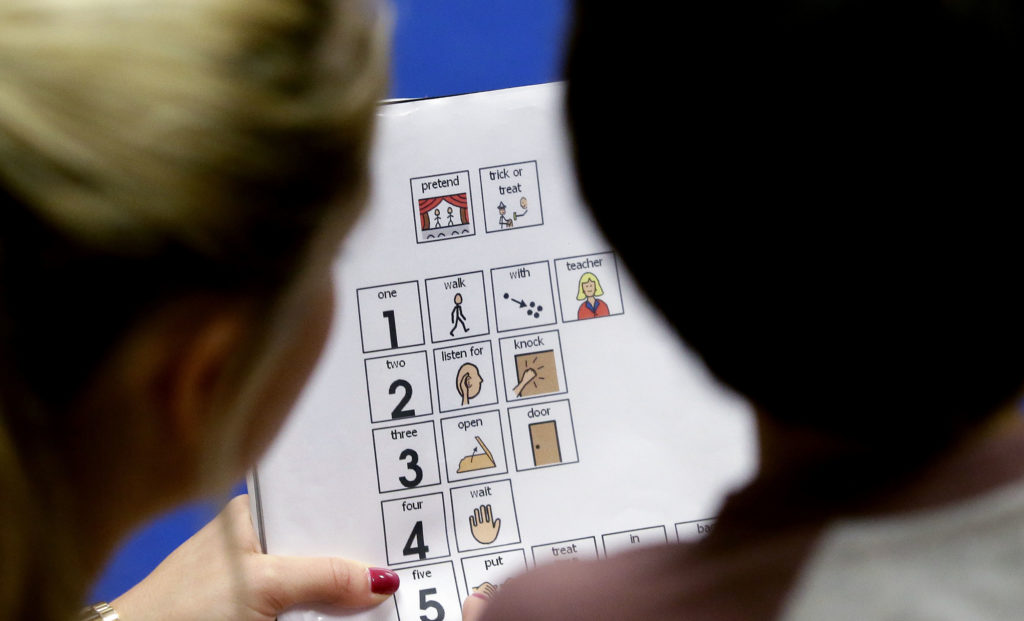
By Valerie Strauss
The Washington Post

ROCKVILLE, Md. (AP) – Katherine Spurlock is a former public school teacher who moved to Montgomery County, Maryland, from a tiny school district in New York and wanted to ensure that her daughter, who has dyslexia, received appropriate interventions and placement in school.
As she worked through the system, she discovered some things that shocked her, including this: The county did not have any data showing how much money was being spent on early academic or behavioral interventions for students who need them. Nor did any other county in Maryland and probably most public school districts in the country.
School districts track how much money is spent on students with special needs who receive Individual Education Programs, or IEPs. But they don’t report their budgets for specialized early intervention – before students get IEPs but are in need of help – nor the effectiveness of the interventions they do make. While intervening services – such as specialized literacy instruction – are given from K-12, the emphasis is on the early years.
Why does this matter? Research shows that early interventions – from kindergarten through third grade – can help alleviate learning disabilities and improve student outcomes. According to Spurlock, the Maryland Special Education Census Data 2014-2015 shows that a large number of students in special education receive referrals after the K-3 period has passed – and that data suggests that by the time students with learning disabilities are referred for special-education services, wide achievement gaps already exist.
How can anyone have a meaningful discussion about what works and what doesn’t if there is no systematic way for a state to know who is doing what in terms of specialized interventions for young children, how much is spent, at what age kids are getting served, and whether it is helping? What’s more, federal law says schools must have intervention programs.
“Early intervention is a great thing, but right now in a big school district, you can’t really talk or advocate about it because it’s just like this amorphous theory,” Spurlock said in an interview. “If you went to a meeting about interventions, which I did recently in Montgomery County, you hear, ‘This is our approach; this is when kids should be getting served,’ but there is no data or budgets attached. You aren’t going to have a vibrant discussion about that. There’s not much to say when there’s no data you can point to that shows how much intervention is going on, how is it benefiting children.”
When Spurlock, who had been involved with a Maryland task force on dyslexia education, discovered this, she began to work toward a remedy, engaging with some state legislators. In August, state Sen. Joan Carter Conway (D-Baltimore) and Del. Marc Korman (D-District 16) sent a letter to Karen Salmon, superintendent of schools in Maryland, asking whether the State Department of Education had any data on early interventions. It doesn’t, William Reinhard, executive director of communications for the department, wrote in an email.
Both Conway and Korman are introducing legislation requiring boards of education to annually report data on specialized intervention services to the State Department of Education and the General Assembly. Conway’s bill calls for such data to be collected from K-12, while Korman’s seeks data from K-3.
According to Spurlock:
Students identified with specific learning disabilities and students identified as other health impaired comprise Maryland school’s two largest disability groups, with 30,643 students and 17,955 students respectively. In both groups, late referrals to special education are common. In 2014-2015, there were 4,774 students identified in K-3 with specific learning disabilities. In grades 4-7 the number increased to 12,306, and, then to 12,415 in grades 8-11. Students identified as other health impaired in grades K-3 numbered 3,783. In grades 4-7, that number increased to 6,929, and for grades 8-11 was 6,421. Emotional Disability also shows greater prevalence in later years of education (744 students in grades K-3; 2,000 students in grades 4-7; and 3,136 students in grades 8-11).
Another wrinkle to this involves something called “disproportionality.” Under the 2004 Individuals With Disabilities Education Act reauthorization, Congress said that if any school district had a disproportionate number of minorities in special education, it would be required to spend 15 percent of its federal special-education money on “coordinated, early intervening services” – the services Spurlock is concerned about.
In December, the U.S. Education Department issued a final rule that created a mandated standard for determining “disproportionality,” and a standard way of assessing whether minority special-education students are in segregated classrooms or face more suspensions/expulsions than other students.
Currently, Reinhard wrote, “Prince George’s County has been identified to designate 15 percent of their IDEA passthrough funds to support students without disabilities, identifying the system’s policies, procedures, and/or practices that contribute to the root cause for disproportionality; this requirement for Coordinated Early Intervening Services is due to PGCPS’ disproportionate representation of African American students suspended ten days or more. Baltimore City has also been identified.”




